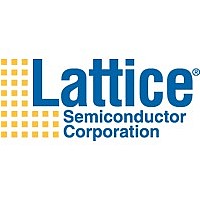M4-96/96-15YC Lattice, M4-96/96-15YC Datasheet - Page 17

M4-96/96-15YC
Manufacturer Part Number
M4-96/96-15YC
Description
CPLD - Complex Programmable Logic Devices HI PERF E2CMOS PLD
Manufacturer
Lattice
Datasheet
1.M4A5-19296-10VNI.pdf
(62 pages)
Specifications of M4-96/96-15YC
Product Category
CPLD - Complex Programmable Logic Devices
Number Of Macrocells
96
Maximum Operating Frequency
55.6 MHz, 83.3 MHz
Delay Time
15 ns
Number Of Programmable I/os
224
Operating Supply Voltage
5 V
Maximum Operating Temperature
+ 70 C
Minimum Operating Temperature
0 C
Package / Case
PQFP-144
Mounting Style
SMD/SMT
Number Of Product Terms Per Macro
20
Factory Pack Quantity
24
Supply Voltage - Max
5.25 V
Supply Voltage - Min
4.75 V
I/O Cell
The I/O cell (Figures 10 and 11) simply consists of a programmable output enable, a feedback path, and
flip-flop (except ispMACH 4A devices with 1:1 macrocell-I/O cell ratio). An individual output enable
product term is provided for each I/O cell. The feedback signal drives the input switch matrix.
The I/O cell (Figure 10) contains a flip-flop, which provides the capability for storing the input in a D-type
register or latch. The clock can be any of the PAL block clocks. Both the direct and registered versions of
the input are sent to the input switch matrix. This allows for such functions as “time-domain-multiplexed”
data comparison, where the first data value is stored, and then the second data value is put on the I/O pin
and compared with the previous stored value.
Note that the flip-flop used in the ispMACH 4A I/O cell is independent of the flip-flops in the macrocells.
It powers up to a logic low.
Zero-Hold-Time Input Register
The ispMACH 4A devices have a zero-hold-time (ZHT) fuse which controls the time delay associated with
loading data into all I/O cell registers and latches. When programmed, the ZHT fuse increases the data path
setup delays to input storage elements, matching equivalent delays in the clock path. When the fuse is erased,
the setup time to the input storage element is minimized. This feature facilitates doing worst-case designs
for which data is loaded from sources which have low (or zero) minimum output propagation delays from
clock edges.
Figure 10. I/O Cell for ispMACH 4A Devices with 2:1
Output Enable
Switch Matrix
Product Term
From Output
Individual
To Input
Switch
Matrix
Macrocell-I/O Cell Ratio
Q
D/L
Block CLK0
Block CLK1
Block CLK2
Block CLK3
Power-up reset
ispMACH 4A Family
17466G-017
Figure 11. I/O Cell for ispMACH 4A Devices with 1:1
Output Enable
Switch Matrix
Product Term
From Output
Individual
To Input
Switch
Matrix
Macrocell-I/O Cell Ratio
17466G-018
17











